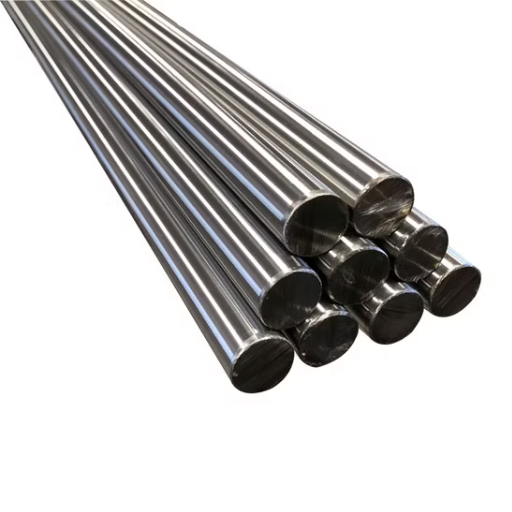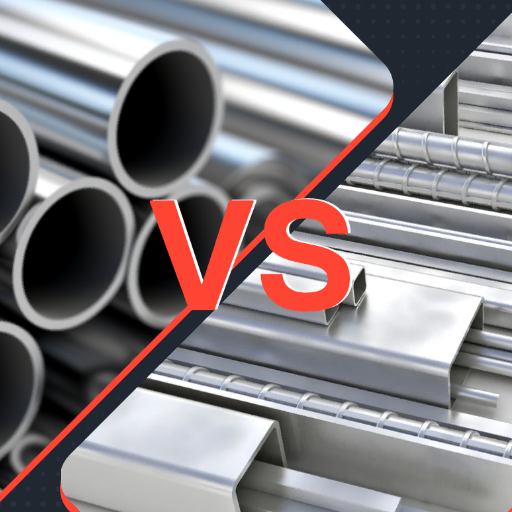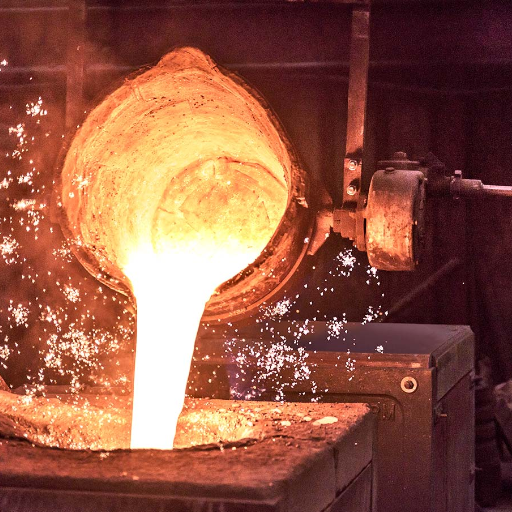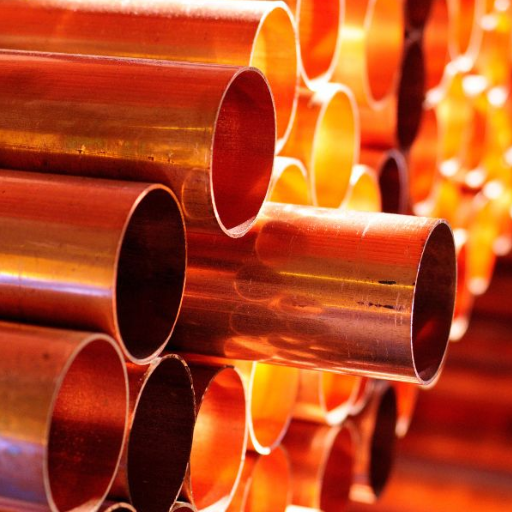In the field of materials that span different industries, from one in aerospace and the other in construction, titanium and steel, we could say, have been extolled by their unique properties and applications. These materials have always been held in esteem for virtually enjoying beauty in strength with durability, and for being versatile and hence becoming the pillars upon which modern engineering and manufacturing stand. So, what we are actually asking is how these two compare. This blog post delves deep into analyzing titanium versus steel: their mechanical properties, weight-to-strength ratio, corrosion resistance, and work horizons. Depending on whether you are a working engineer, a product designer, or someone who wants to learn more about material science, this extensive comparison should shed some light on the plus points and disadvantages each material has, thereby assisting you in making informed decisions in scenarios where true performance matters.
Understanding Titanium and Steel
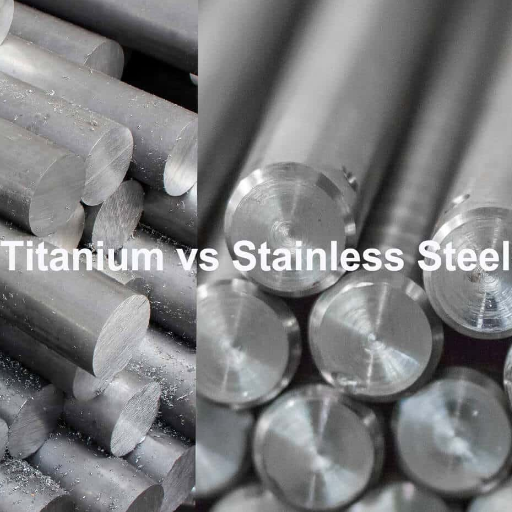
Titanium, due to its lightweight, excellent strength-to-weight ratio, corrosion resistance, and biocompatibility, has found excellent use in aerospace, medical, and marine fields. Its density is about 4.5 g/cm³, much lighter than steel’s, but it maintains full tensile strength.
Steel is, in fact, a combination of iron and carbon and sometimes other elements for imparting special properties. It is denser, weighing about 7.8 g/cm³, while offering much better ductility, versatility, and are more cost-effective. It is endowed with mechanical properties that may be very widely varied by heat treatment and alloying, hence its use; for example, construction, automotive, and heavy machinery.
The two materials may be equally good, and the decision should be based on the strength required, the weight one can bear, exposure to the environment, and the price per unit of strength.
What is Titanium?
Titanium is a transition metal famous for its high strength-to-weight ratio, corrosion resistance, and biocompatibility. From the atomic perspective, it has 22 an atomic number, and with a density of about 4.5 g/cm³, it is lighter than steel with similar structural strength. Being non-magnetic, it has an extremely high melting point at 1,668°C (3,034°F), together with very high chemical resistance and environmental degradation, including chloride pitting and resistance to seawater corrosion. This property finds it greatly applicable in aerospace industries, medical devices, marine applications, and chemical plants. Titanium alloys can be made to further enhance other properties like fatigue and thermally stable modes for wider applications in the fields of advanced engineering and technology.
What is Steel?
An alloy derived chiefly from iron and carbon usually comprises anything between 0.02% and 2.14% of carbon by weight. Steel is well known for its tensile strength, inclination toward ductility, and flexibility, and thus able to be used in construction, manufacturing, and engineering with high frequency. The addition of chromium, manganese, nickel, and molybdenum will augment steel effects in corrosion resistance, hardness, and toughness.
The perceptive differentiation of steels is the division of steels into carbon steels, alloy steels, stainless steels, and tool steels. For example, stainless steel contains a minimum of 10.5% chromium, which gives it a very high resistance to rust and staining, hence making it most suitable for kitchenware, architecture, and medical instruments. With growing metallurgical improvements, further development of steel into higher-performing steels such as HSLA steels and UHSS steels has found its importance in automotive design and aerospace engineering. The adaptability of steel, coupled with its efficiency, fosters the continuing development in infrastructure and applications for advanced technology.
Key Types: Stainless Steel and Titanium Alloys
Stainless steel is a tough, corrosion-resistant material made basically from iron, chromium (10.5% minimum), some carbon amount, as well as other alloying elements, including nickel and molybdenum. Preventing rust would enable it to resist temperature extremes, making it necessary in construction, manufacturing, and health care sectors. The austenitic grades containing 304 and 316 stainless steel enjoy fame for their outstanding capabilities in resisting corrosion and mechanical properties, amongst the applications which range from production instruments to structural components in marine environments. Later developments of duplex stainless steels, which combined characteristics of both ferritic and austenitic classes, have further increased its strength and resistance to pitting, broadening its applications even further.
Comparative Analysis of Properties
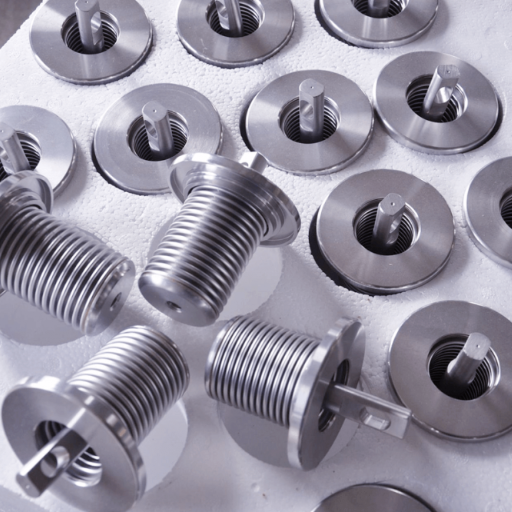
- Mechanical Properties
Titanium alloys have a very fine balance between strength and weight, offering better mechanical properties in relation to aluminum and steel at similar densities. For example, Grade 5 titanium alloy (Ti-6Al-4V) boasts an approximation of 900 MPa in tensile strength, a higher rank over most aluminum alloys. Whereas, titanium’s lower density (4.5 g/cm³) allows for very aggressive weight-cutting in structural applications.
- Corrosion Resistance
Titanium alloys resist corrosion better than stainless steel in numerous phenomena, including seawater and acidic media, and this is because these alloys form a protective oxide, which is strong and stable through the years, thereby reducing maintenance requirements.
- Thermal Performance
Even if steel alloys melt at higher temperatures, titanium alloys are better performers at the high temperature ranges because they retain their strengths almost without any reduction at up to 600°C. Titanium alloys find practical uses in places like jet engines, where high thermal stability combined with lightweight structures is necessary.
- Biocompatibility
Titanium has excellent biocompatibility, a feature that almost places it a step ahead of many other materials in the medical field. The basis of the biocompatibility is that it’s non-toxic and hypoallergenic, so it can associate well with human tissue, making it the preferred choice for implants and prosthetics instead of stainless steel or cobalt-chrome alloys.
Strength-to-Weight Ratio
Titanium possesses a high strength-to-weight ratio, thus making it one of the most efficient materials for critical engineering applications. With a density of approximately 4.5 g/cm³, it is significantly lighter than traditional metals such as steel, with comparable, and in some cases, superior tensile strength. Specific strength or strength by weight, which is also considered to be specific strength or strength-to-weight of titanium, exceeds metals and alloys commonly used in most engineering applications. This is why it is predominantly used in aerospace structures, automotive, and high-performance sporting equipment. These two parameters, which are low density and high strength, guarantee a reduction in the quantity of material needed for an already weight-sensitive design, itself capable of providing maximum structural strength and performance under considerable load. Further, titanium also keeps its strength even at high temperatures, making it very useful for demanding environments.
Corrosion Resistance
It has outstanding corrosion resistance through a very stable oxide layer (mainly titanium dioxide), which is spontaneously formed on the surface by the interaction of titanium with oxygen gathered from the air. The layer is very tough, even to assault, and heals itself when it gets damaged by scratching or other means. This renders titanium highly appropriate for corrosive environments: fine environments are marine with chloride, acidic chemical processing conditions, and biological systems in contact with bodily fluids.
Key Differences Between Titanium vs Steel
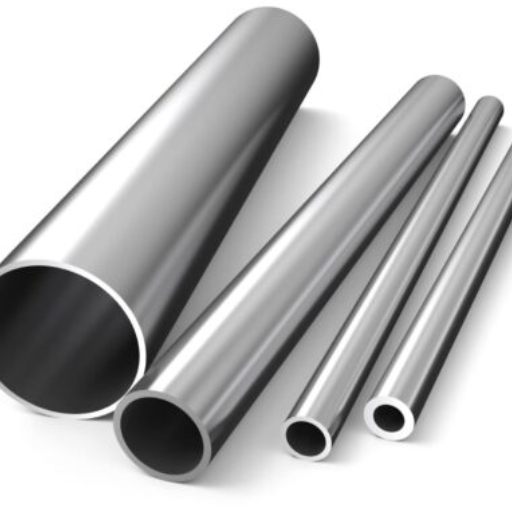
- Weight
Titanium is about 40-45% lighter than steel and is therefore the best option when weight reduction is paramount: aerospace and automotive are prime industries.
- Strength-to-Weight Ratio
The extraordinary strength-to-weight ratio favors titanium. Although steel could be stronger, titanium really outperforms steel in strength when compared to its weight.
- Corrosion Resistance
Titanium is extremely corrosion-resistant when exposed to conditions that could prove harmful to steel, with seawater and chemicals instances of those conditions where it shines, and where steel requires coatings or other treatments to protect it from rusting.
- Cost
Titanium production and processing ranks far more expensive than most varieties of steel and hence finds usage mostly restricted to those few special purposes where its worth may justify the price above.
- Thermal Conductivity
Steel possesses greater thermal conductivity than titanium, and for that reason, it finds more applications where transmission of heat is required, for instance, cooking is conducted on it and also by heat exchangers.
- Applications
Titanium stands in for steel within the high-end and specialized fields such as aerospace, implants, and marine. Steel offers broader applications for construction, machinery, and common tools by virtue of its affordability and strength.
Compare the Differences: Titanium vs Steel
|
Parameter |
Titanium |
Steel |
|---|---|---|
|
Density |
Low, about 4.5 g/cm³ |
Higher, about 7.8 g/cm³ |
|
Strength-to-Weight Ratio |
Excellent |
Moderate |
|
Corrosion Resistance |
High, resistant to rust and corrosion |
Susceptible to rust without treatment |
|
Thermal Conductivity |
Low |
High |
|
Hardness |
Lower than hardened steel |
Can be very high when alloyed |
|
Machinability |
Challenging, requires special tools |
Easier and cost-effective |
|
Cost |
Expensive |
Affordable |
|
Magnetic Properties |
Non-magnetic |
Generally magnetic |
|
Applications |
Aerospace, medical, marine industries |
Construction, machinery, tools |
|
Recyclability |
Highly recyclable |
Highly recyclable |
|
Melting Point |
Approximately 1,668°C |
Ranges from 1,370°C to 1,510°C |
|
Fatigue Resistance |
High |
Varies based on grade |
|
Welding and Joining |
Difficult to weld |
Relatively easy to weld |
Maintenance and Durability Considerations
When you are assessing the materials for long-term use, maintenance and durability become the two factors to be weighed carefully. Titanium, with its inimitable corrosion resistance, is low in maintenance in almost all environments, including harsh marine and chemical environments. The oxide layer protects itself almost without any external help. Hence, the material is everlasting due to such regeneration. But because titanium has high fatigue resistance and low wear rates, it is suitable for applications under cyclic loading situations; however, the price goes against it for larger applications.
Applications of Steel and Titanium
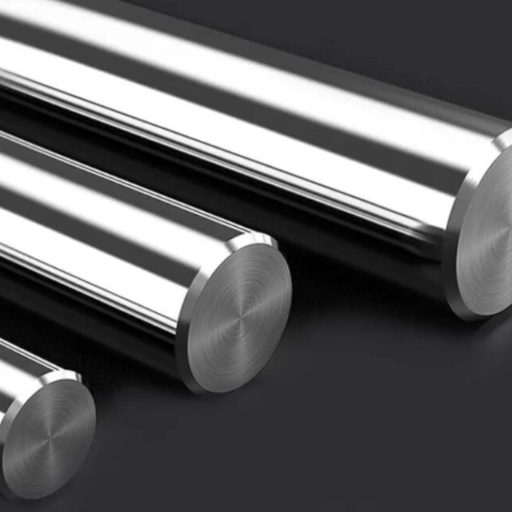
Applications of Steel:
- Construction and Infrastructure
- Steels-carbon steels and reinforcing steels-are good for structural applications in bridges, skyscrapers, and highways-they boast a high strength-to-weight ratio.
- In terms of steel used in construction around 52% was accounted for in total steel production in 2022. This shows its dominance.
- Automotive Manufacturing
- Nowadays, mostly AHSSs are preferred to maximize the safety, fuel efficiency, and minimize greenhouse gas emissions.
- About 60% of the steel in a car consists of steel parts located in the body panels, engine, chassis, and exhaust system.
- Energy Sector
- Steel finds application in pipeline works, fabrication of pressure vessels, and construction of drilling rigs.
- Electrical steels are critical for transformers and electric motors in renewable energy systems.
- Industrial Equipment and Machinery
- Use Titanium Max.1, if required, for extreme wear resistance and durability in areas of agricultural machinery, mining machinery, and heavy manufacturing.
Applications of Titanium:
- Aerospace and Defense
- Titanium alloys are widely used for airframe components, jet engines, and spacecraft. Their applications are justified by their high strength to low weight and ability to withstand extreme temperatures.
- Almost 50% of the world’s demand for titanium is from the aerospace industry.
- Medical and Biomedical Devices
- Owing to titanium’s biocompatibility and corrosion-resistant features, it is used in implant machining: hip replacements, dental implants, and pacemaker casings.
- It is estimated that titanium for medical engineering will grow at an annual rate of 4.4% between 2023 and 2030.
- Chemical Processing Plants
- Since titanium resists most aggressive chemicals, such as chlorides and acids, it finds a good use in heat exchangers, reactors, and storage tanks, especially within the petrochemical industry.
- Marine Applications
- Since recent years, titanium has been used extensively in marine and shipbuilding applications for components such as propeller shafts, heat exchangers, and desalination systems owing to its excellent resistance to seawater corrosion.
- While titanium does pose a higher initial cost than stainless steel, it lowers the long-term costs of maintenance in marine conditions.
Aerospace Industry: Lightweight Strength
Aerospace being a high-performance propulsion environment, titanium, with its high strength-to-weight ratio, is the indispensable material to translate into significant weight reductions for aircraft frames, turbine engines, and landing gear without compromising structural integrity. Titanium alloys such as Ti-6Al-4V find applications in aerospace components since they retain strength at very high temperatures and provide excellent resistance against fatigue under severely loaded conditions, thereby enhancing component life and reliability. Researchers comment that titanium can result in airframe weight reduction to the tune of 20 percent, leading to direct improvements in fuel efficiency and reduction in operational range. Also, being resistant to corrosion further helps titanium become a favored material in challenging environments such as high altitude and aerospace propulsion systems for modern aerospace engineering.
Construction Sector: Cost and Durability
Making the Right Choice: Titanium vs Steel
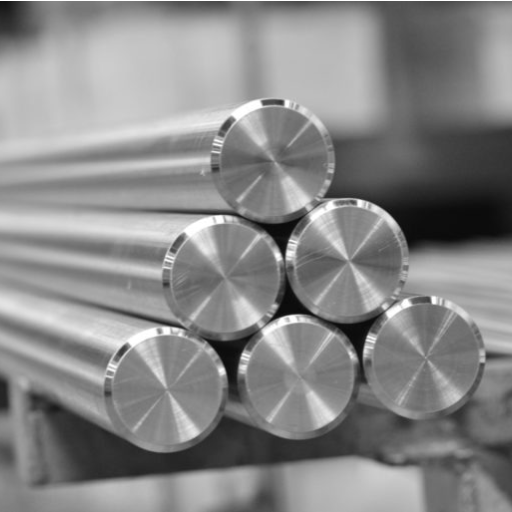
Whether one chooses titanium or steel depends on the targeted application. Titanium, though, especially for aerospace, medical, or marine environments, has a very high respect for its high strength-to-weight ratio, good corrosion resistance, and biocompatibility. Steel is normally cheap but strong in structural and industrial applications, where weight is not much of a consideration. Steel provides a wide range of alloys designed for many uses, whereas titanium becomes indispensable whenever weight reduction and durability under extreme conditions are matters that have to be considered. Consider costs, environmental exposure, weight restrictions, and intended use to make an informed choice.
When to Use Titanium
This offers elevated corrosion resistance in special corrosive environments. Examples would include marine utilization, since it resists soaking in brine water for hours without significant degradation. Hence, being compatible with living organisms, it is the material of choice for medical devices like implants and prosthetics, where human body incompatibility is not considered. Furthermore, titanium is imperative in aerospace and aviation manufacturing because of its highest strength-to-weight ratio that aids in fuel efficiency while granting structural integrity. With the recent advancement in titanium processing, it is used extensively in construction and sports equipment where precision and lightweight traits suffice as performance determinants and intrinsically affect user performance.
When to Choose Steel
Steel is preferred more anywhere where durability, economy, and ease of shaping are prerequisites. It finds applications in construction that call for utmost hardness and deformation resistance; among them are bridges, skyscrapers, and industrial machines. Aside from this, steel is nevertheless very versatile, offering various types of alloys, from stainless steel that is corrosion resistant to high-carbon steel that is harder than most for cutting tools.
Reference Sources
-
Metal Supermarkets: The Difference Between Titanium vs Steel: Titanium offers a superior strength-to-weight ratio, excellent corrosion resistance, and high-temperature tolerance, making it ideal for aerospace, medical, and marine applications. Steel, on the other hand, is more cost-effective, easier to machine, and widely used in construction and industrial applications due to its high tensile strength and elasticity.
-
Ulbrich: Titanium Versus Steel – A Battle of Strength: Titanium is lighter and more corrosion-resistant, making it suitable for weight-sensitive and harsh environments like aerospace and medical implants. Steel is stronger in terms of tensile yield strength and is more affordable, making it a better choice for structural and industrial uses.
-
ThomasNet: Steel vs. Titanium – Strength, Properties, and Uses: Titanium excels in strength-to-weight ratio and corrosion resistance, while steel offers higher tensile strength and rigidity. Titanium is preferred for aerospace and medical applications, whereas steel is favored for construction and automotive industries due to its cost-effectiveness and versatility.
Frequently Asked Questions (FAQs)
Q: What is the strength of steel compared to titanium?
A: The strength of steel is notable, but titanium is often considered stronger when looking at specific grades. Titanium has a higher strength-to-weight ratio, making it advantageous in applications where weight is a critical factor. Different titanium grades exhibit unique properties that can surpass the tensile and yield strength of various steel alloys. When comparing pure titanium to steel alloys, titanium’s exceptional strength becomes evident, especially in high-performance environments. It’s important to choose the right material depending on the intended application and required mechanical properties.
Q: How does titanium’s strength and durability compare to steel?
A: Titanium is stronger than steel in terms of strength-to-weight ratio, offering a unique advantage in applications where both strength and weight are crucial. While steel is generally more cost-effective, titanium is significantly more expensive due to its extraction and processing complexities. However, titanium’s unique properties, such as its resistance to corrosion and biocompatibility, make it an attractive option for specific uses, including medical implants and aerospace components. On the other hand, steel’s hardness and durability are well-suited for construction and automotive applications, where it can withstand significant stress and strain.
Q: Are titanium watches better than steel watches?
A: Titanium watches are often preferred over steel watches for their lightweight and comfortable wear, thanks to titanium’s higher strength-to-weight ratio. While steel watches are more common and typically less expensive, they may not offer the same level of durability or resistance to corrosion that titanium provides. Titanium is biocompatible, making it a great choice for individuals with sensitive skin. However, titanium can be more prone to scratches compared to harder steel, which may affect the aesthetic over time. Ultimately, the choice between titanium and steel watches depends on personal preferences and intended use.
Q: What are the thermal properties of titanium versus steel?
A: The thermal properties of titanium and steel differ significantly, affecting their applications in various industries. Titanium has a higher thermal expansion coefficient compared to steel, which means it can expand and contract more with temperature changes. This characteristic can be beneficial in environments with fluctuating temperatures. Conversely, steel is known for its excellent thermal conductivity, making it suitable for applications requiring effective heat transfer. When working with titanium, one must consider how these thermal properties impact performance, especially in high-temperature environments.
Q: Is titanium more susceptible to corrosion compared to steel?
A: Titanium is less susceptible to corrosion than many types of steel, particularly when comparing it to carbon steel, which can rust easily. Its natural oxide layer protects it from environmental factors, making it an ideal choice for marine and chemical applications. However, some stainless steel alloys offer excellent corrosion resistance and may outperform titanium in specific conditions. When selecting materials, it is essential to consider the environment and the potential for corrosion to ensure long-lasting performance.

